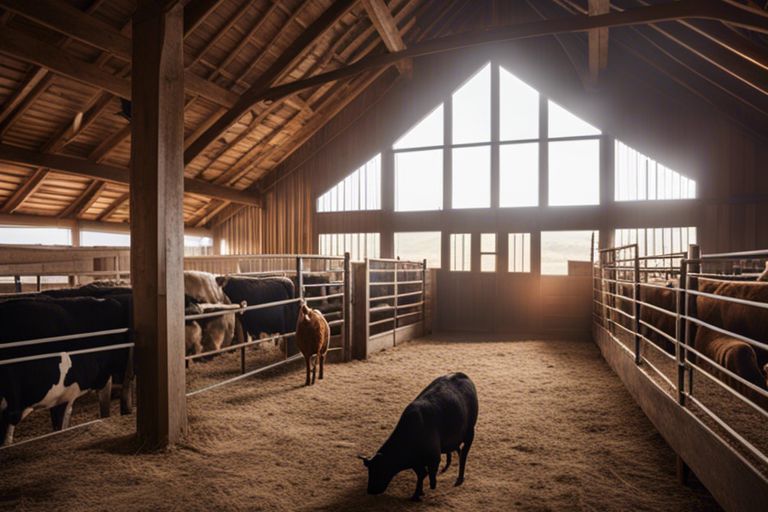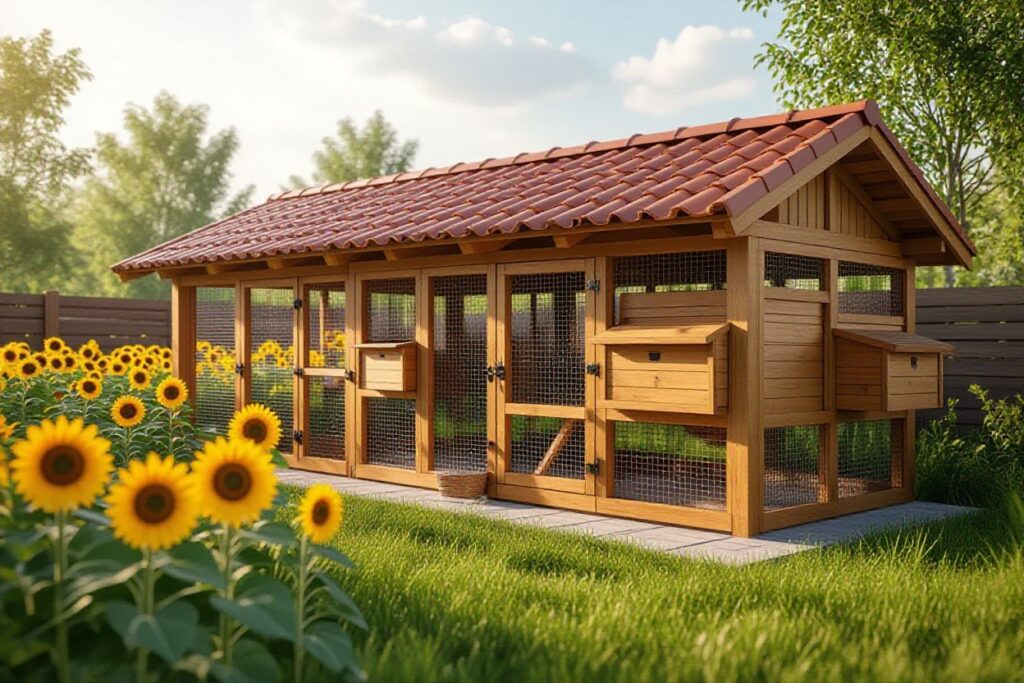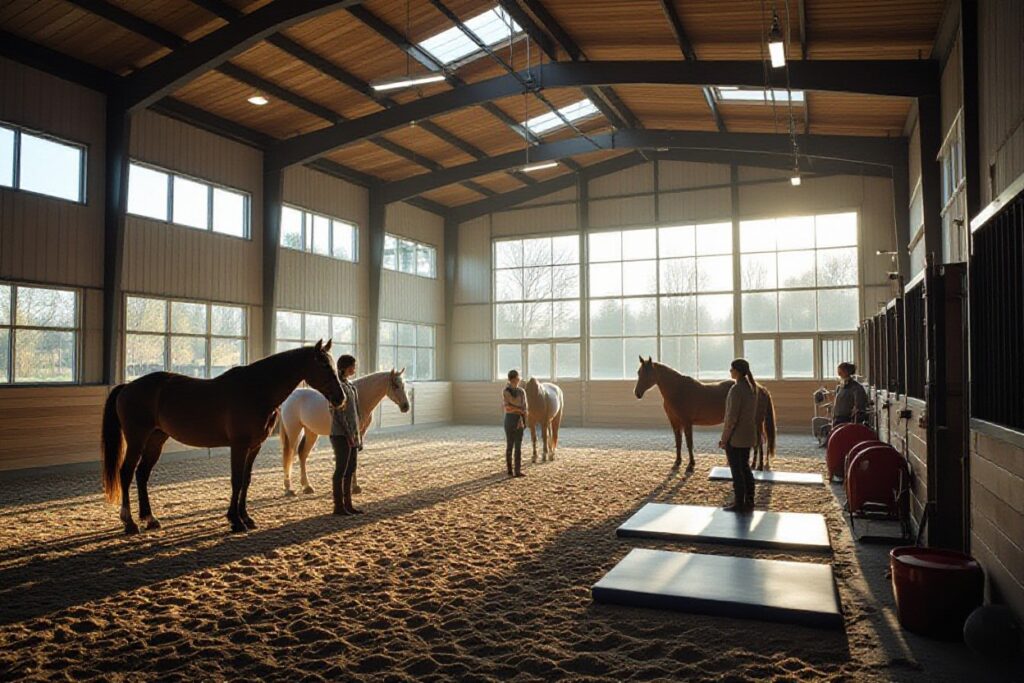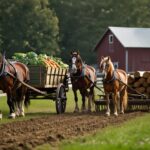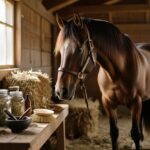Most livestock owners understand the importance of providing their animals with proper shelter to ensure their health and comfort. Whether it’s protection from the elements, a safe space to rest, or a place to seek refuge, a well-designed shelter is imperative for livestock welfare. In this blog post, we will explore key factors to consider when building or selecting shelters for your livestock, from ventilation and insulation to space requirements and bedding options. By implementing these strategies, you can create a conducive environment that promotes the well-being of your livestock and helps them thrive.
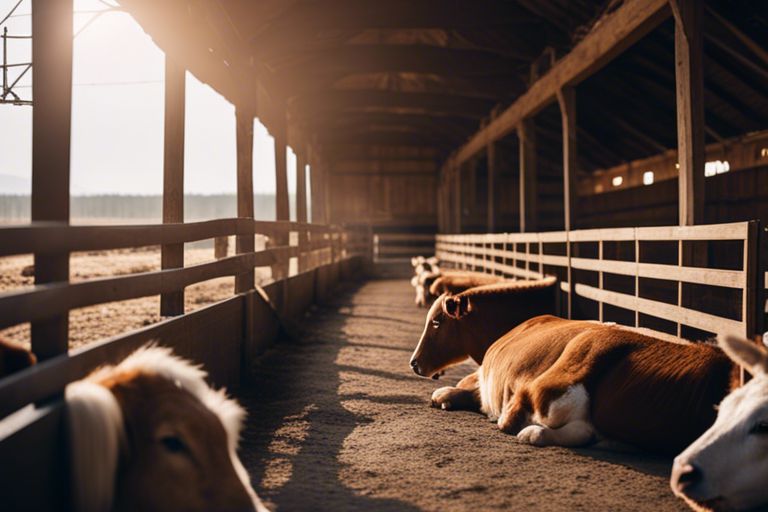
Fundamental Requirements for Livestock Shelters
Shelter Design and Space Requirements
While ensuring the health and comfort of livestock in shelters, it is crucial to pay attention to shelter design and space requirements. Livestock shelters should be well-ventilated, free from drafts, and provide adequate space for animals to move around comfortably. Factors such as the size and breed of livestock should be considered when determining the space requirements for shelters.
Climate Control and Ventilation
On the topic of climate control and ventilation, it is vital to create a shelter environment that can regulate temperature and airflow. Proper ventilation is crucial in preventing the buildup of harmful gases and controlling humidity levels within the shelter. It also helps in maintaining a comfortable environment for livestock, especially during extreme weather conditions.
To ensure effective climate control and ventilation in livestock shelters, it is recommended to install systems such as fans, vents, and insulation. These systems can help regulate temperature, humidity, and airflow within the shelter, creating a conducive environment for the health and well-being of the animals. Additionally, regular maintenance and monitoring of these systems are necessary to ensure optimal performance and the comfort of the livestock.
Climate Control: Proper climate control in livestock shelters is vital to ensure the well-being of the animals. Extreme temperatures can cause stress and health issues in livestock, affecting their productivity and overall welfare. It is important to provide adequate ventilation, insulation, and temperature regulation systems in shelters to create a comfortable environment for the animals throughout the year.
Nutritional Management in Shelters
Feeding Systems and Routines
The feeding systems and routines in livestock shelters are crucial for ensuring the health and well-being of the animals. It is important to establish a consistent feeding schedule that provides the necessary nutrients for their growth and maintenance. This can include feeding them a balanced diet of grains, hay, and supplements tailored to their specific needs. Additionally, access to fresh and clean water should always be available to prevent dehydration.
Water Supply and Quality
Routines for ensuring a clean and reliable water supply are important in livestock shelters. Water quality should be regularly monitored to ensure it is free from contaminants that could harm the animals. Adequate water intake is crucial for digestion, nutrient absorption, and overall health. It is recommended to provide access to clean water sources at all times and to regularly clean and refill water containers to prevent the growth of harmful bacteria.
This emphasis on water supply and quality is critical for maintaining the health and comfort of livestock in shelters. By prioritizing proper hydration and monitoring water conditions, shelter managers can help ensure the well-being of the animals under their care.
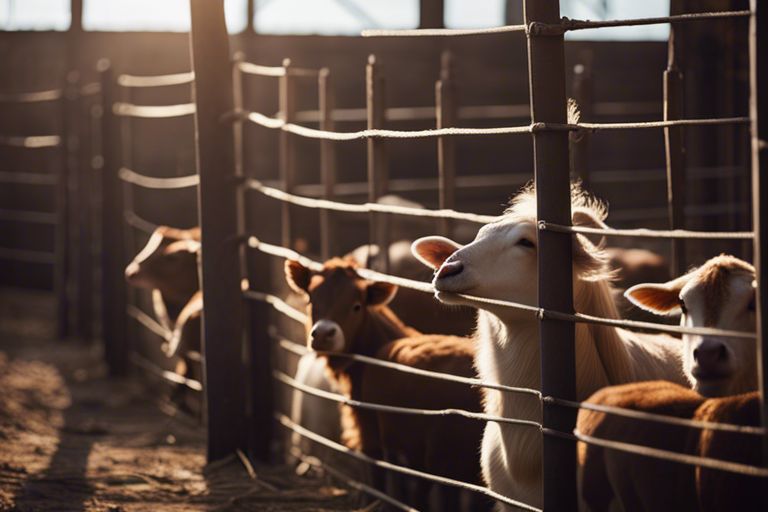
Health Maintenance and Veterinary Care
Preventative Healthcare Measures
Your livestock’s health is paramount when it comes to running a successful shelter. Veterinary professionals recommend implementing preventative healthcare measures to ensure the well-being of your animals. Regular vaccinations, deworming, and maintaining proper nutrition are imperative components of preventing illness in livestock.
Handling Common Health Issues
Veterinary care is crucial in handling common health issues that may arise in livestock shelters. From respiratory infections to skin conditions, it is important to have a knowledgeable veterinarian on call to address these issues promptly. Regular health check-ups and early detection can prevent minor health issues from escalating into more serious conditions.
To maintain the health and comfort of your livestock, it is imperative to prioritize veterinary care and preventative healthcare measures. By staying proactive and addressing any health issues promptly, you can ensure that your animals thrive in your shelter environment.
Livestock Behavior and Stress Reduction
Understanding Livestock Behavior
Many factors influence livestock behavior, including species, age, sex, and previous experiences. Understanding how livestock normally behave can help shelter operators identify signs of stress or discomfort. Livestock have their own social structures and communication methods, which can vary between species. By observing and studying these behaviors, shelter staff can create environments that promote the well-being of the animals under their care.
Strategies for Minimizing Stress
To ensure the health and comfort of livestock in shelters, it is crucial to implement strategies for minimizing stress. Livestock can experience stress due to various reasons, such as changes in their environment, social dynamics, or handling procedures. Understanding these stressors can help shelter operators develop techniques to reduce them and create a more calming and secure atmosphere for the animals.
Livestock may exhibit signs of stress through behaviors such as vocalizations, pacing, reduced appetite, or aggression. Providing a quiet and clean living space, as well as minimizing sudden movements or loud noises, can help alleviate stress in livestock. Additionally, establishing a routine for feeding, handling, and social interactions can provide a sense of stability and security for the animals.
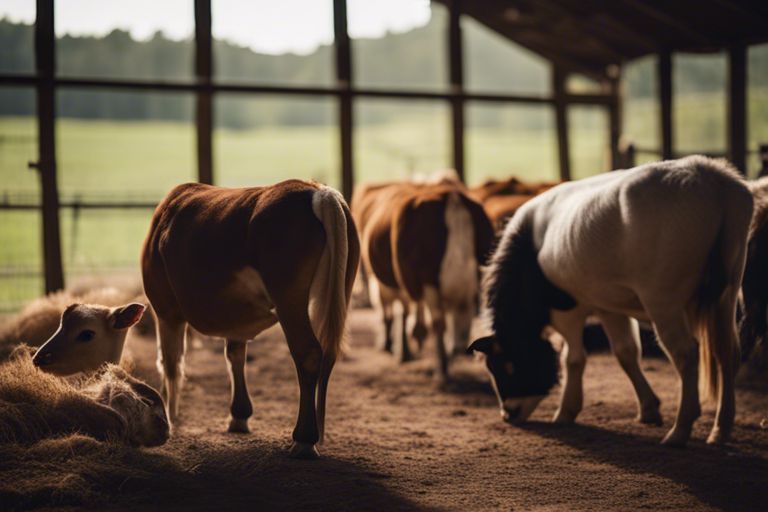
Monitoring and Maintenance of Shelter Conditions
Daily Monitoring Protocols
One of the most crucial aspects of ensuring the health and comfort of livestock in shelters is maintaining daily monitoring protocols. This includes checking for proper ventilation, temperature control, and cleanliness of the bedding and feeding areas. Regularly inspecting the water supply to ensure it is clean and readily available is also important. By establishing and following a daily monitoring routine, you can quickly identify and address any issues that may arise, preventing larger problems from developing.
Long-Term Shelter Maintenance
The long-term maintenance of shelter conditions is vital to the overall well-being of livestock. Regular inspections of the structural integrity of the shelter, including roofing, walls, and flooring, should be conducted to prevent leaks or damage that could compromise the animals’ safety. Additionally, maintaining a regular schedule for cleaning and disinfecting the shelter helps control the spread of disease and pests, ensuring a healthy environment for the livestock to thrive in.
Maintenance tasks such as repairing any damaged areas, replacing worn-out bedding, and conducting necessary upgrades should be planned and executed consistently to prolong the lifespan of the shelter and provide a comfortable and secure space for the animals. Implementing a preventative maintenance program can help minimize the risk of unexpected issues and ensure the longevity of the shelter for years to come.
Summing up
In this guide, we have discussed the importance of ensuring the health and comfort of livestock in shelters. By providing proper ventilation, temperature control, nutrition, and sanitation, we can create a safe and stress-free environment for our animals. It is crucial to regularly monitor their well-being and address any issues promptly to prevent the spread of diseases and ensure optimal growth and production. Keep in mind, a healthy and contented animal is not only beneficial for their own welfare but also for the quality of the products they provide. By following these guidelines, we can guarantee the well-being of our livestock and ultimately improve the overall efficiency and success of our operation.
FAQ
Q: Why is it important to ensure the health and comfort of livestock in shelters?
A: Ensuring the health and comfort of livestock in shelters is crucial for their well-being and productivity. It helps in preventing diseases, reducing stress, and promoting overall animal welfare.
Q: What factors should be considered when designing shelters for livestock?
A: Factors such as adequate ventilation, proper insulation, sufficient space, access to clean water, and protection from extreme weather conditions should be taken into account when designing shelters for livestock.
Q: How can proper ventilation be maintained in livestock shelters?
A: Proper ventilation in livestock shelters can be maintained by installing vents, fans, and windows to ensure the circulation of fresh air. It is imperative for reducing humidity, controlling odors, and preventing respiratory issues.
Q: What bedding materials are suitable for livestock shelters?
A: Suitable bedding materials for livestock shelters include straw, hay, wood shavings, and rubber mats. These materials provide insulation, comfort, and help in absorbing waste to keep the animals clean and dry.
Q: How often should livestock shelters be cleaned and sanitized?
A: Livestock shelters should be cleaned and sanitized regularly to prevent the spread of diseases and parasites. Aim to clean out manure, soiled bedding, and debris on a daily basis, while deep cleaning and disinfecting the shelters periodically.
Q: What should be included in a livestock shelter first aid kit?
A: A livestock shelter first aid kit should include items such as bandages, antiseptic solutions, wound dressings, thermometer, gloves, scissors, and basic medications. It is imperative for providing immediate care in case of injuries or illnesses.
Q: How can stress in livestock be minimized in shelters?
A: Stress in livestock can be minimized in shelters by providing a comfortable environment, maintaining a consistent routine, ensuring social interaction with other animals, and handling them gently. Minimizing stress is important for promoting good health and preventing behavioral issues.
